Beneath the Surface: The Strategic Role of Mining in Modern Industry
Mining Reimagined: Technology, Sustainability, and the Future of Resources
Artificial Intelligence Foreign Direct Investment Social Responsibility Cloud Corporate Governance Robotics CyberSecurity Internet Of Things Environmental Sustainability
Singapore Sharpens Its Digital Finance Focus: Tokenization in, Speculative Crypto Out.
Barrick Completes Tongon Mine Sale to Atlantic Group for Upfront $192M, Potential $305M Total

Barrick Gold has completed the sale of its 89.7% interest in the Tongon gold mine and associated exploration assets in Côte d’Ivoire to the Atlantic Group.
The deal, initially announced in October 2025, has a total potential value of $305 million.
At closing, Barrick received an upfront cash payment of $192 million, which includes a $23 million shareholder loan repayment due within six months. The remaining $113 million is contingent on future payments, subject to specific undisclosed conditions.
The divestiture is part of Barrick’s strategy to optimize its portfolio by divesting non-core assets, allowing the company to focus on its tier-one operations and priority exploration projects.
Barrick Gold has completed the sale of its 89.7% interest in the Tongon gold mine in Côte d'Ivoire to an Ivorian partner, marking a transition to full local ownership and management. The mine, which began production in 2010 and was originally slated for closure in 2020, had its operational life extended through successful exploration by Barrick.

Financial details of the sale were not fully disclosed, though Barrick confirmed the deal includes additional contingent payments. These future amounts are dependent on the prevailing gold price over a two-and-a-half-year period and on the successful conversion of mineral resources to reserves over a five-year timeframe. Barrick intends to use the proceeds from the divestment to strengthen its balance sheet and enhance returns to shareholders.
Barrick was advised on the transaction by TD Securities and Treadstone Resource Partners as financial advisors, with Lawson Lundell providing legal counsel. The company continues its global operations in mining, exploration, and development across 18 countries.
The buyer, the Atlantic Group, is a diversified Congolese industrial group with interests in agriculture, financial services, and industry, operating in 15 African countries. With the transfer of ownership, the Tongon mine begins a new phase under Ivorian management.

Barrick Gold to Explore IPO for North American Assets, Forms New Subsidiary

Barrick Gold Corporation’s Board of Directors has authorized management to explore a potential initial public offering (IPO) for a new subsidiary, tentatively named “NewCo,” which would hold a portfolio of the company’s premier North American gold assets.
This strategic review, aimed at assessing a value creation opportunity, is slated for completion by early 2026. The envisioned plan involves listing NewCo through an IPO of a small minority interest.
The proposed subsidiary’s portfolio would be anchored by Barrick’s core joint venture interests in Nevada Gold Mines and the Pueblo Viejo mine, alongside its wholly-owned, high-potential Fourmile gold discovery in Nevada.
Following its IPO, Barrick will retain a controlling majority stake in NewCo and continue to manage its global portfolio of gold and copper assets.
The move forms part of Barrick’s ongoing portfolio review and its commitment to maximizing shareholder value, with a particular emphasis on its North American operations.

Mark Hill, Barrick’s Chief Operating Officer and Interim President & CEO, highlighted the quality of the assets involved:
“Our gold operations in Nevada and the Dominican Republic are world-class, located in top-tier mining jurisdictions. By including the 100%-owned Fourmile project in Nevada, one of this century’s most significant gold discoveries, NewCo would be positioned in a league of its own.”
On Operational Focus & Leadership:
Hill emphasized the company's unwavering commitment to enhancing operational performance and increasing shareholder value. He stated that with the current leadership teams in place, the company is well-positioned to meet its stated commitments.
On the Potential North American IPO:
The company is exploring an initial public offering (IPO) for its North American assets. The strategic rationale for this move is twofold:
1. To provide both new and existing shareholders with greater flexibility through exposure to a pure-play gold company with growth prospects, in a specific jurisdiction.
2. This initiative is framed as a potential value-creation measure, with management authorized to explore it through early next year.

On Maintaining Core Commitments:
Hill stressed that this strategic exploration will not divert focus from the company's foundational commitments: operating safely, meeting performance targets, and delivering on its growth projects.
Next Update Timeline:
The company plans to provide a progress update on this potential IPO during the release of its full-year 2025 results, scheduled for February of next year.
Barrick Mining’s potential initial public offering (IPO) remains subject to several key conditions. The company has clarified that any decision to proceed, including its timing, requires approval from its Board of Directors, the fulfillment of customary regulatory requirements, and favorable market conditions.
In recent strategic developments, Barrick completed the sale of its Hemlo Gold Mine in Canada to Carcetti Capital, which plans to rebrand the asset as Hemlo Mining Corporation. Simultaneously, the company reached a significant agreement with the Government of the Republic of Mali to resolve all outstanding disputes related to the Loulo and Gounkoto mines, marking a major step forward in stabilizing its operations in the region.
Adding a new dimension to the company's outlook, Reuters recently reported that Elliott Investment Management has acquired a substantial stake in Barrick Mining.

Entrenched in Embers: How Asia’s Long-Term Coal Contracts Are Choking the Clean Energy Transition

Across Asia, the shift toward renewable energy is being held hostage by decades-old power contracts, locking utilities into coal dependency even as cleaner, cheaper alternatives become available.
According to a report highlighted by Devdiscourse, these inflexible agreements are delaying critical emissions reductions in the world's fastest-growing energy markets, jeopardizing global climate goals and amplifying financial risks for governments and investors.
Data from the Powering Past Coal Alliance (PPCA) reveals the scale of the problem: in Southeast Asia, between 50% and 100% of existing coal capacity remains bound by power purchase agreements (PPAs) with roughly 9 to 18 years left to run. This contractual inertia stifles the integration of renewables, often leaving solar and wind assets underused even when they are more cost-competitive.
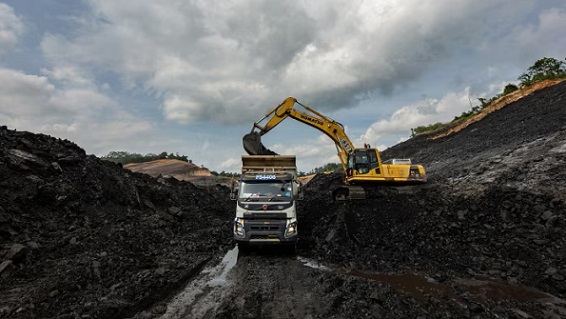
The issue is particularly acute in coal-heavy giants China and India, where extensive coal procurement obligations continue to dominate energy planning. These long-term commitments, backed by vested interests in mining, infrastructure, and state revenue, create a form of "carbon lock-in" that slows policy ambition and crowds out investment in green energy.
Analysts warn that without proactive measures to restructure, buy out, or prematurely retire these coal contracts, Asia’s energy transition will remain uneven and dangerously slow. The tension between legacy investments and climate urgency underscores a central challenge: breaking free from the contractual and political chains of coal to make way for a flexible, renewable-powered grid.
The consequences of Southeast Asia's continued reliance on coal are becoming increasingly stark. While coal's share of global power generation declined from 39% to around 34% over the past decade, the region moved in the opposite direction, sourcing about 45% of its electricity from coal in 2024, a significant increase from 35% a decade earlier. This divergence occurs even as global renewables investment grows; in Southeast Asia, renewables accounted for just 26% of electricity output, well below the global average of 41%.

The persistence of coal is locked in by formidable economic and structural barriers. Industry representatives acknowledge that entrenched coal assets, supported by guaranteed revenue for plant operators and stable local employment, make early closures politically and financially difficult. Furthermore, prematurely breaking power purchase agreements can expose grid operators to severe financial penalties, creating a powerful disincentive for transition.
Even in China, where carbon emissions are projected to decline this year after a period of stagnation, coal-fired power generation has risen. Analysts caution that the country risks repeating patterns observed in late 2024, which are expected to intensify grid integration and curtailment challenges. According to a report by Wood Mackenzie, solar curtailment rates are forecast to average above 5% across 21 provinces over the next decade, a significant increase from the 10 provinces affected in the first eight months of this year.
Similar strains are emerging across other major Asia-Pacific economies. Japan, Australia, and India have all signaled growing renewable curtailment in 2025, as existing coal commitments constrain grid flexibility. India, despite its ambitious clean energy targets, is preparing new long-term power purchase agreements with coal generators. Analysts at Ember and Climate Trends warn that as renewable generation expands, utilities risk accumulating stranded assets and facing mounting fixed costs for underutilized coal plants.

UK Judge Rules BHP Liable for 2015 Brazil Dam Collapse—Nation’s Worst Environmental Disaster

In November 2015, a catastrophic failure of a tailings dam at the Samarco iron ore mine in southeastern Brazil unleashed a torrent of mining waste through the Rio Doce basin.
The disaster claimed 19 lives, devastated entire villages, and displaced thousands of residents, marking it as the country’s worst environmental tragedy.
On November 14, 2025, UK High Court Justice Finola O’Farrell ruled that global mining giant BHP Group is legally liable for the disaster under Brazilian law, despite not directly owning the dam at the time. The landmark decision holds significant implications for multinational corporations’ accountability in environmental and human rights cases.
BHP holds a 50% stake in Samarco, jointly owned with Vale. According to the Associated Press, researchers from the University of Ulster estimated that the mine waste released during the disaster spread through 600 kilometers of river systems, killing approximately 14 tonnes of freshwater fish.

Mrs. Justice O’Farrell concluded that the decision to repeatedly raise the height of the dam, despite well-documented risks, was the “direct and immediate cause” of its catastrophic collapse. She determined that BHP was sufficiently involved in Samarco’s operations to have intervened and prevented the failure.
Class-action lawyers representing 600,000 Brazilian citizens and 31 affected communities contend that BHP endorsed the dam-raising strategy to boost production output. “The risk of collapse was foreseeable,” O’Farrell wrote. “It is inconceivable that, under those circumstances, a decision would have been made to continue increasing the dam’s height, and the collapse could have been averted.”
BHP, now headquartered in Australia, announced it would appeal the judgment. Brandon Craig, President of Minerals Americas, stated that many of the 240,000 claimants in the UK lawsuit “have already received compensation in Brazil.”

The case was filed in London because, at the time of the disaster, one of BHP’s principal corporate entities was registered there. The trial began in late 2024, shortly before Brazil’s federal government finalized a separate agreement with Samarco and Vale. That settlement mandates BRL 132 billion (approximately $24.8 billion) in payments over 20 years to address social, environmental, and infrastructure damages.
The recent UK ruling addressed only BHP’s legal liability for the 2015 Fundão dam collapse; a second phase of the trial will determine the amount of damages owed. “We had to cross the Atlantic Ocean and go to England to finally see a mining company held to account,” said Mónica dos Santos of the Commission for Those Affected by the Fundão Dam, speaking to the Associated Press.
“The judge’s decision shows what we have been saying for the last 10 years: it was not an accident, and BHP must take responsibility for its actions,” added Gelvana Rodrigues, whose son died in the mudslide.

Ivanhoe Mines Launches $2 Billion Platreef PGM Project in South Africa with Presidential Endorsement

Canadian mining giant Ivanhoe Mines (TSX: IVN) has officially commissioned its $2 billion Platreef platinum group metals (PGM) mine in northern South Africa, marking a major milestone in its pan-African growth strategy that also encompasses copper and nickel developments across the continent.
Situated in the mineral-rich Bushveld Complex, one of the world’s premier PGM, producing regions, the project positions Ivanhoe as a significant international player in the PGM sector, even amid fluctuating global demand for platinum, palladium, and rhodium.
In a ceremony held on November 19, South African President Cyril Ramaphosa inaugurated the mine, lauding the investment as a “gigantic” step forward for the nation’s economy and mining sector. The Platreef Mine, first envisioned nearly four decades ago by Ivanhoe founder and Executive Co-Chairman Robert Friedland, underscores the company’s long-term commitment to developing critical mineral resources in Africa.
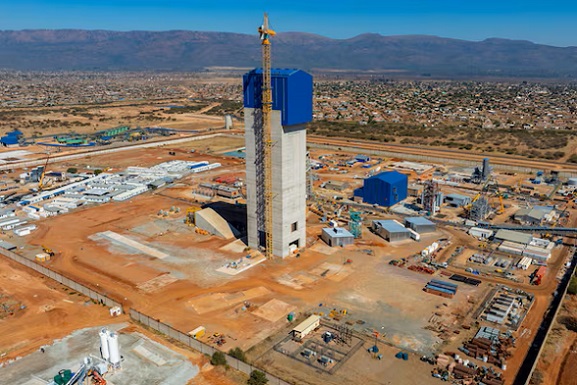
“This mine marks the beginning of a new chapter for our country,” he said. “It is the first to open with the full involvement of the local community, not just as workers, but as equity owners and true stakeholders in this remarkable resource. In that sense, it’s breaking new ground, rewriting history, and setting a precedent for how mining should be done in our nation.”
The mine’s Phase One concentrator, with a capacity of 800,000 tonnes per year, produced its first concentrate on November 18, following the start of hot commissioning on October 29. According to Ivanhoe, the operation is on track to become the world’s lowest-cost primary producer of platinum-group metals.
Annualized output in Phase Two is expected to increase nearly fivefold compared to Phase One, reaching 460,000 ounces of platinum, alongside 9,000 tonnes of nickel and 6,000 tonnes of copper. By Phase Three, platinum production will exceed 1 million ounces annually, accompanied by 22,000 tonnes of nickel and 13,000 tonnes of copper.

Ivanplats, a unit of Ivanhoe Mines, used a $100 million loan, secured jointly from Société Générale of France and Nedbank of South Africa, to fund construction of Phase One at the Platreef Mine.
Ivanhoe has now entered discussions for a $700 million financing facility to support the development of Phase Two. The subsequent Phase Three expansion is expected to be funded primarily by the cash flow generated from the earlier phases. Robert Friedland, Executive Chairman of Ivanhoe Mines, noted that the mine’s commissioning on November 18 marks the culmination of efforts he first began in the 1980s.
“This will be the largest precious metals mine on the African continent,” Friedland said. “Right now, we have only Phase One, the ‘baby mine,’ the first little bubble. But in two years, construction will begin on the giant shaft, which will be the largest in Africa. All of this has been made possible thanks to the vision and support we received from President Cyril Ramaphosa in the early days.”

Ghana Launches Largest Mining Sector Audit in a Decade to Recover Revenue and Strengthen Oversight
Founders Metals Expands Antino Gold Project to 56,000ha with Strategic Suriname Concession Acquisition

Founders Metals has finalized the acquisition of a 36,000-hectare exploration concession west of its Antino gold project in southeastern Suriname, increasing the total project area to 56,000 hectares.
The acquisition, following a letter of intent signed last month, removes prior boundary constraints, enabling the company to resume northwestward drilling at Upper Antino, where historical auger data signaled strong resource potential.
New assay results from the company’s ongoing 60,000-meter drill program have extended the strike length of gold mineralization at Upper Antino to over 2,500 meters. Notable intercepts include:
- 17m at 3.06 g/t Au (hole FR157)
- 60m at 0.85 g/t Au from 8.1m depth (hole FR172)
Additional highlights confirm continuity and expansion across key zones:
- A 250m extension of parallel mineralization between Froyo and Donut, including 14m at 1.88 g/t Au from 225m (FR154)
- At Froyo, high-grade intervals such as 7m at 11.74 g/t Au from 197m (FR173)
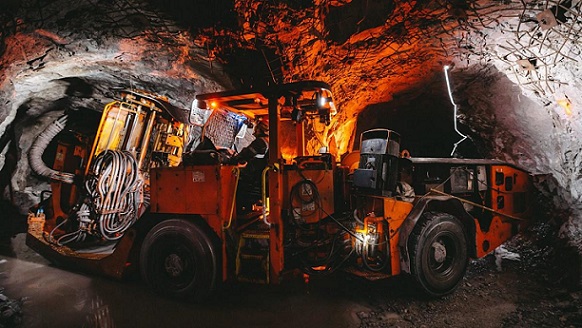
Colin Padget, President and CEO of Founders Metals, stated: “This is a pivotal moment for Founders. In just the past two weeks, we’ve secured a C$50 million (approximately $35.48 million) strategic investment from Gold Fields, expanded the Antino land package to 56,000 hectares, and, based on today’s results, shown outstanding along-strike and progressive expansion of gold mineralisation at Upper Antino.”
Backed by a strong cash position, a seasoned exploration team, and a demonstrable ability to operate efficiently in Suriname, Founders is ideally positioned to systematically advance its expanding land package—hosting highly prospective geology with proven potential for multi-million-ounce gold deposits.
With four drills currently active across Da Vinci, Lower Antino, Parbo, and Upper Antino, and Van Gogh drilling set to begin soon, Founders expects a steady flow of results through Q4 2025 and into early 2026.

Drilling highlights include a 250-meter extension of parallel gold mineralisation linking the Froyo and Donut areas, highlighted by an intercept of 14 meters grading 1.88 g/t gold starting at a depth of 225 meters in hole FR154.
At the Froyo zone, drilling has confirmed vertical continuity across multiple structures, with notable intercepts in hole FR173 including 7 meters at 11.74 g/t gold from 197 meters, 19 meters at 1.18 g/t gold from 133 meters, and 4 meters at 5.10 g/t gold from 109 meters.

Ghana Moves to Secure Springfield’s WCTP2 Stake to Unlock $3B Deepwater Oil and Gas Potential

Ghana is in advanced negotiations to acquire Springfield Exploration and Production’s stake in the West Cape Three Points Block 2 (WCTP2), as part of a strategic push to revive development of one of the nation’s largest untapped offshore hydrocarbon assets.
Located adjacent to Eni’s producing Sankofa field, WCTP2 is estimated to hold more than 1.5 billion barrels of oil in place and approximately 1.2 trillion cubic feet (tcf) of natural gas, according to Springfield’s published data. Industry sources suggest the block could be valued at over $3 billion.
Springfield founder Kevin Okyere described the talks as “positive and productive,” emphasizing the company’s full engagement with the Ghanaian government. “Our position is straightforward: this asset must be advanced,” Okyere said. “We are committed to a decisive and constructive outcome that aligns with Ghana’s national interest.”
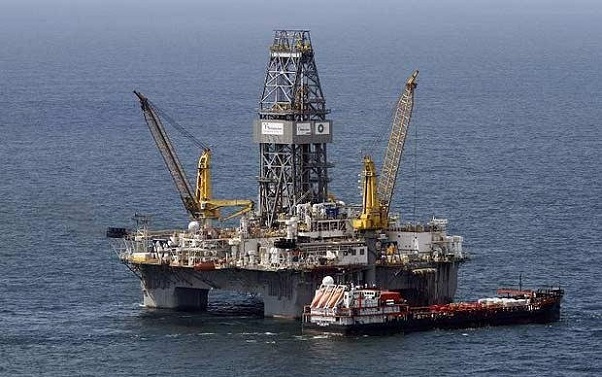
The acquisition would position the state to fast-track development of the stalled deepwater project, potentially unlocking significant energy and fiscal benefits for the country.
Springfield made history in 2019 as the first wholly Ghanaian-owned company to drill in deepwater, with its Afina discovery now central to ongoing negotiations. Development of the block, however, stalled due to a protracted unitisation dispute with Eni (NYSE: E; BIT: ENI) over its adjacent Sankofa field. Ghanaian authorities initially sought to resolve the impasse by directing the merger of the two fields, a move that ultimately triggered arbitration proceedings.

To break the deadlock, the government is now pursuing a state-led solution: the Ghana National Petroleum Corporation (GNPC) and its upstream subsidiary, GNPC Explorco, would acquire Springfield’s stake, positioning the state to lead the next phase of appraisal and development. While international partners could be engaged later, officials stressed that no binding agreements have been reached.
Officials emphasized that the proposed acquisition aligns with Ghana’s broader strategy to reverse declining oil output, safeguard fiscal revenues, and bolster long-term energy security. According to Ministry of Energy data, the country’s crude production has dropped from approximately 200,000 barrels per day (kbpd) in 2019 to between 140,000 and 150,000 kbpd in recent years.
Negotiations are still underway, with further updates expected “in the near future.”

Blue Gold Secures $140M to Restart Bogoso and Prestea Gold Mine in Ghana
Rio Tinto to Slash Yarwun Alumina Output by 40% to Extend Operations Beyond 2031 Tailings Limit

Rio Tinto has announced a 40% reduction in production at its Yarwun alumina refinery in Gladstone, Australia, effective October 2026.
The decision aims to extend the facility’s operational life through 2035 while the company evaluates modernisation and long-term sustainability options.
At current production levels, the refinery’s tailings storage facility is forecast to reach capacity by 2031. By cutting output, Rio Tinto gains an additional four years to develop and trial technical solutions that could support continued operations beyond that date.
Armando Torres, Managing Director of Rio Tinto Aluminium Pacific Operations, said:
“While we have thoroughly explored the development of a second tailings facility at Yarwun over several years, the required investment is substantial and not currently economically viable. Reducing production from October 2026 allows us to maintain alumina output until 2035 while pursuing pathways to secure Yarwun’s longer-term future.”

Rio Tinto has announced a production curtailment at its Yarwun alumina refinery in Gladstone, which is expected to affect approximately 180 roles. The company has confirmed that redeployment planning is already underway across its Gladstone operations.
The curtailment will reduce Yarwun’s alumina output by around 1.2 million tonnes per annum (mtpa), from its current capacity of approximately 3 mtpa. Despite this reduction, Rio Tinto affirmed that customer commitments will be fully met and that other operations, including bauxite mines and aluminium smelters, will continue to run at full capacity.
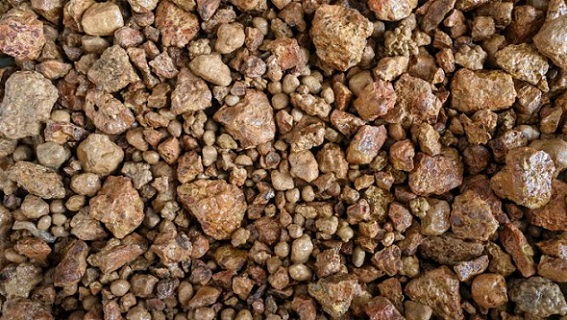
Yarwun remains a strategically important asset for Rio Tinto. The company continues to advance innovative tailings management solutions at the site, including neutralisation and centrifuge-based dry tailings technology. Decarbonisation efforts are also a key priority, with initiatives such as transitioning boiler fuels from coal and gas to biofuels and progressing the hydrogen calcination project, supported by funding from the Australian Renewable Energy Agency (ARENA).
The refinery currently employs around 725 people and supplies alumina both to Rio Tinto’s own aluminium smelters and to international customers.
Torres added: “We are committed to our alumina and aluminium operations in Gladstone and will work closely with employees, contractors, and suppliers to manage this transition. While this is a difficult decision, it is a necessary one that safeguards the site’s long-term viability and ensures its continued economic contribution.”

Newmont’s Ahafo North Mine Achieves Commercial Production, Bolstering Gold Output in Ghana
Africa’s Mining Sector Poised for Sustained Growth Driven by Critical Minerals and Policy Reforms

Platinum remains the cornerstone of Africa’s mining landscape, with the region accounting for nearly 80.3% of global production in 2024.
Africa, one of the world’s richest mining regions, continues to strengthen its position as a global hub for mineral production.
According to the US Geological Survey (USGS), Africa accounted for 79.3% of total PGM [platinum group metals] reserves in 2025, 61.7% of chromium reserves, and substantial shares of reserves of cobalt (54.5%), manganese (36.5%), diamonds (32.4%), bauxite (25.5%), copper (8.2%), gold (7.8%) and lithium (1.6%), among others.
Despite its resource wealth, the industry faces persistent challenges, including infrastructure gaps, policy uncertainty, and rising operational costs. Geopolitical shifts also add pressure, for instance, in 2025, the US imposed a 50% tariff copper imports, effective 1 August, directly affecting African exporters such as the Democratic Republic of Congo (DRC).
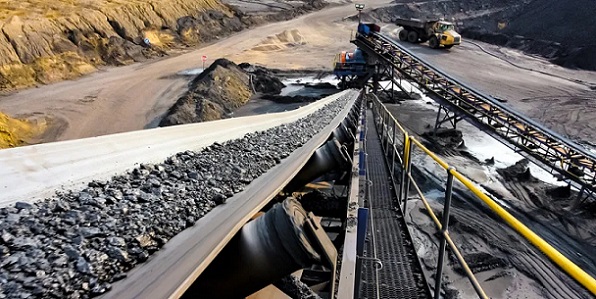
Platinum remains the cornerstone of Africa’s mining landscape, with the region accounting for nearly 80.3% of global production in 2024. The production of platinum in Africa is expected to decline by 6.4% in 2025, due to heavy rains in early 2025 as well as ongoing operational challenges due to mine restructuring. The region is forecasted to account for 79.5% of global platinum production in 2025.
South Africa stands out as the dominant producer, accounting for 89% of the region’s total output in 2024, while Zimbabwe contributes a further 11% share. Zimbabwe’s platinum production will remain flat in 2025 before rebounding in 2026 with the commissioning of the Mupan and Karo Platinum projects.
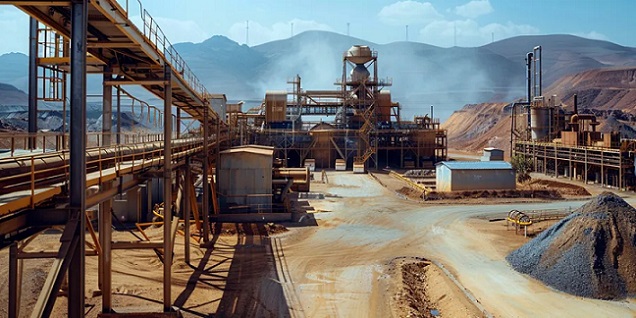
Over the forecast period (2025-2030), the platinum industry is expected to grow at a CAGR of 1.4% to nearly 5.12 million ounces (moz) in 2030. Key players operating in Africa’s platinum sector include Anglo American, Impala Platinum Holdings, Sibanye Stillwater, and Northam Platinum.
South Africa remains a mining powerhouse, producing 71.5% of global platinum and 42.7% of chromium in 2024. However, persistent structural issues, including high electricity costs, labour inefficiencies, and logistical constraints continue to challenge operations. To address these concerns, the South African Government has introduced measures to promote domestic beneficiation and revive ferrochrome smelting. These efforts are expected to support a 3.9% increase in chromium production in 2025, taking total output to 20.5 million tonnes (mt).
Azumah Resources Ghana Ltd Announces new Management and Ownership Structure

The Interconnected Web of Mining: How Resource Extraction Powers the Global Economy
Mining is far more than the act of extracting minerals from the earth, it is a foundational pillar of modern civilization.
From the smartphones in our pockets to the roads we drive on, the energy that powers our homes to the satellites orbiting our planet, nearly every facet of contemporary life relies, directly or indirectly, on materials sourced through mining. This industry serves as a critical upstream engine, fueling innovation, infrastructure, and economic activity across a vast and intricate network of interdependent sectors.
This comprehensive overview explores the deep and dynamic relationships between mining and the key industries it enables, highlighting not only traditional linkages but also emerging connections driven by technological advancement, sustainability imperatives, and global strategic priorities. Special attention is given to two high-impact categories: gold, a timeless asset with modern industrial relevance, and rare earth elements (REEs), the invisible enablers of the clean energy and digital revolutions.
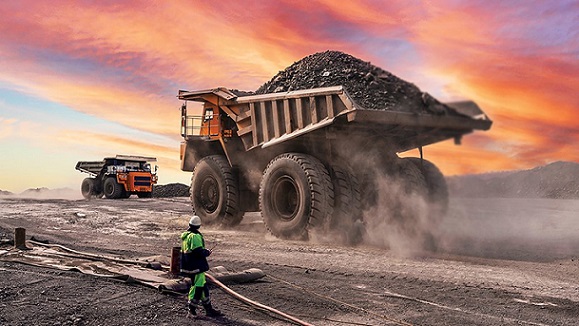
1. Energy: Powering the Present and Future
Mining is inextricably linked to global energy systems, both as a supplier of essential inputs and as a major energy consumer.
- Fossil Fuels & Nuclear: Coal and uranium, both mined resources, remain significant sources of baseload electricity in many regions. Uranium fuels nuclear reactors, providing low-carbon power critical to decarbonization strategies.
- Renewables & Storage: The clean energy transition hinges on mining. Lithium, cobalt, nickel, and graphite are essential for lithium-ion batteries in electric vehicles (EVs) and grid storage. Neodymium and dysprosium (rare earths) enable high-efficiency permanent magnets in wind turbines and EV motors.
- Energy Demand from Mining: Conversely, mining operations consume vast amounts of energy, for drilling, hauling, crushing, and processing. This creates a feedback loop, driving innovation in on-site renewable generation (e.g., solar-powered mines) and energy efficiency.
2. Manufacturing: The Industrial Backbone
Manufacturing relies on a steady supply of metals and industrial minerals, all sourced through mining.
- Base Metals: Iron ore (for steel), copper (for wiring and heat exchangers), aluminum (from bauxite), zinc, and lead are foundational to machinery, appliances, and industrial equipment.
- Industrial Minerals: Limestone (for cement and steel flux), gypsum (for drywall), and talc (for ceramics and plastics) support a wide array of production processes.
- Precision Components: High-purity silicon from quartz mining enables semiconductor manufacturing, while gold and silver ensure reliable electrical contacts in sensitive devices.
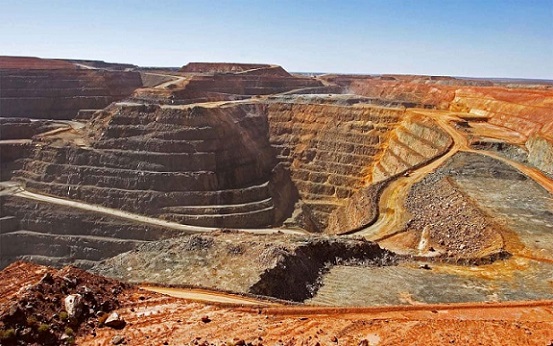
3. Construction & Infrastructure: Building the Physical World
The built environment is literally constructed from mined materials.
- Aggregates: Sand, gravel, and crushed stone constitute over 70% of all mined materials by volume, forming the base of roads, bridges, and foundations.
- Cement & Concrete: Limestone and clay are quarried and processed into cement, the binding agent in concrete.
- Structural Metals: Steel rebar (from iron ore) reinforces concrete structures, while aluminum and copper are used in building frames, roofing, and electrical systems.
Without mining, cities would not rise, transportation networks would not expand, and resilient infrastructure would be impossible to build.

4. Technology & Electronics: The Digital Age’s Hidden Foundation
Modern electronics depend on a diverse portfolio of mined elements, many of them obscure but indispensable.
- Semiconductors: Silicon (from quartz), gallium, and germanium are critical for chips and transistors.
- Connectivity & Reliability: Gold’s unmatched conductivity and corrosion resistance make it ideal for connectors, switches, and bonding wires in smartphones, servers, and medical devices.
- Displays & Sensors: Indium (for touchscreens), rare earths like europium and terbium (for vibrant display colors), and tantalum (for capacitors) are embedded in nearly every digital device.
- Data Centers & AI: The exponential growth of cloud computing and artificial intelligence intensifies demand for copper (for wiring), lithium (for backup power), and rare earths (for cooling and power systems).
5. Transportation & Automotive: Moving People and Goods
From internal combustion engines to autonomous electric vehicles, transportation is deeply mineral-intensive.
- Traditional Vehicles: Steel, aluminum, copper, and rubber (which relies on sulfur from mining) form the core of cars, trucks, and trains.
- Electric Mobility: EVs require up to six times more minerals than conventional vehicles, especially lithium, cobalt, nickel, manganese, and graphite for batteries, plus copper for motors and wiring.
- Safety & Control Systems: Gold is used in airbag sensors, anti-lock braking systems (ABS), and engine control units due to its reliability in critical circuits.
- Logistics Infrastructure: Rail lines, ports, and airports, all built with mined aggregates and metals, enable the global movement of goods, including mined commodities themselves.

6. Agriculture: Feeding a Growing Population
Mining quietly sustains global food security through fertilizer production.
- Phosphate Rock: Mined primarily in Morocco, the U.S., and China, it provides phosphorus, a key nutrient for plant growth.
- Potash: Extracted from ancient seabeds, potash supplies potassium, essential for crop yield and drought resistance.
- Sulfur: A byproduct of oil refining and metal smelting, sulfur is used to produce sulfuric acid, which processes phosphate into usable fertilizer.
Without these mined inputs, modern high-yield agriculture would collapse, threatening food supplies for billions.
7. Defense & Aerospace: Strategic Materials for National Security
Advanced defense and aerospace systems rely on specialized, high-performance materials sourced through mining.
- Rare Earth Elements: Used in precision-guided munitions, radar and sonar systems, jet engines, and satellite communications. Neodymium magnets power actuators in fighter jets; samarium-cobalt magnets function in extreme temperatures.
- Gold: Applied in satellite components, infrared shielding, and electrical connectors where failure is not an option.
- Titanium & Tungsten: Provide strength-to-weight ratios and heat resistance for airframes, armor, and munitions.
- Strategic Stockpiling: Many nations maintain reserves of critical minerals to ensure supply during geopolitical disruptions.
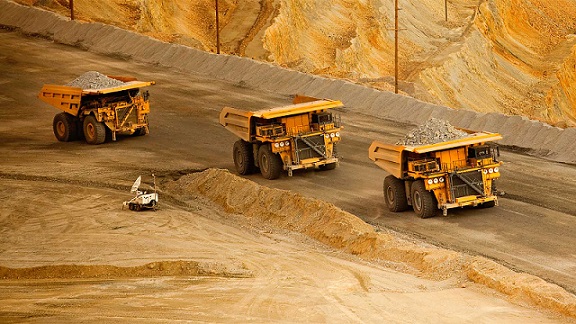
8. Finance & Investment: Commodities as Economic Anchors
Mining intersects deeply with global financial systems.
- Commodity Markets: Metals and minerals are traded on exchanges like the LME and COMEX, influencing prices, inflation, and trade balances.
- Gold as a Financial Asset: Central banks hold over 35,000 tonnes of gold as a reserve asset. Gold ETFs, futures, and mining equities offer investors exposure to commodity cycles.
- Project Financing: Mining projects require billions in upfront capital, engaging investment banks, export credit agencies, and institutional investors.
- ESG Integration: Environmental, Social, and Governance (ESG) criteria now shape investment decisions, pushing miners toward transparency, decarbonization, and community engagement.
9. Environmental, Water & Circular Economy Services
As sustainability becomes paramount, mining increasingly collaborates with environmental sectors.
- Water Management: Mines consume and treat large volumes of water, driving innovation in recycling, desalination, and zero-discharge systems.
- Land Rehabilitation: Post-closure mine sites are restored through re-vegetation, wetland creation, and soil stabilization, often in partnership with ecological consultants.
- Urban Mining & Recycling: Recovering gold, copper, and rare earths from e-waste reduces pressure on primary extraction. “Urban mining” is now a growing subsector, linking traditional mining to circular economy models.
- Carbon Accounting: Miners invest in carbon capture, renewable energy, and electrified fleets to meet net-zero commitments.
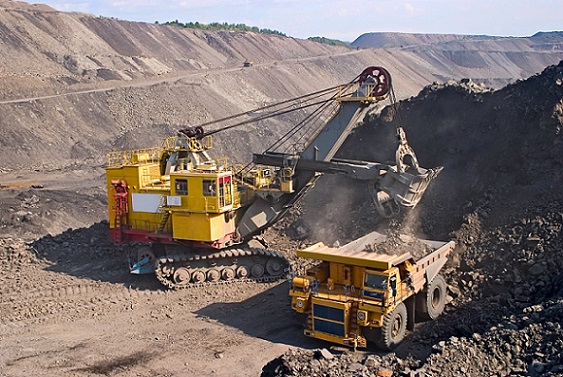
10. Engineering, Equipment & Technology Providers
Mining does not operate in isolation, it is enabled by a sophisticated ecosystem of support industries.
- Heavy Machinery: Companies like Caterpillar, Komatsu, and Sandvik design and manufacture drills, excavators, autonomous haul trucks, and processing plants.
- Engineering Firms: Global consultancies (e.g., Wood, Hatch, Fluor) design mines, processing facilities, and tailings management systems.
- Digital Transformation: AI, drones, IoT sensors, and digital twins optimize exploration, safety, and operational efficiency. Autonomous mines in Australia and Chile showcase this convergence.
- Chemical Suppliers: Provide reagents for mineral extraction, such as cyanide for gold leaching or solvents for rare earth separation, under strict environmental controls.
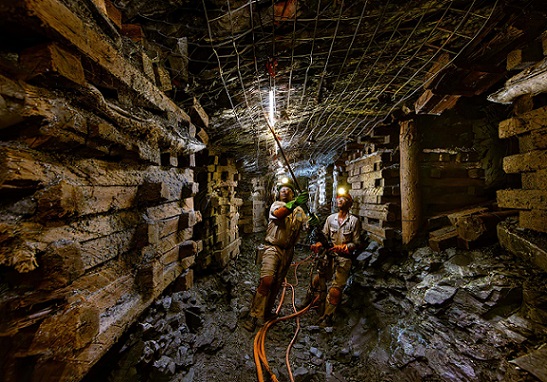
The Strategic Role of Gold and Rare Earth Elements
While all mined materials matter, gold and rare earth elements exemplify mining’s dual role as both an economic stabilizer and a technological enabler.
Gold: Timeless Value, Modern Utility
- Financial Hedge: Retains value during crises; held by central banks and individuals alike.
- Jewelry: Accounts for ~50% of annual demand, especially in cultural markets like India and China.
- Industrial Use: Critical in aerospace, medical devices, and high-reliability electronics where failure is unacceptable.
Rare Earth Elements: The Invisible Enablers
- Clean Tech: Neodymium and praseodymium magnets are irreplaceable in EVs and wind turbines.
- Defense Applications: Vital for guidance systems, lasers, and stealth technology.
- Supply Chain Vulnerability: Over 80% of global REE processing occurs in China, making diversification a strategic priority for the U.S., EU, and allies.
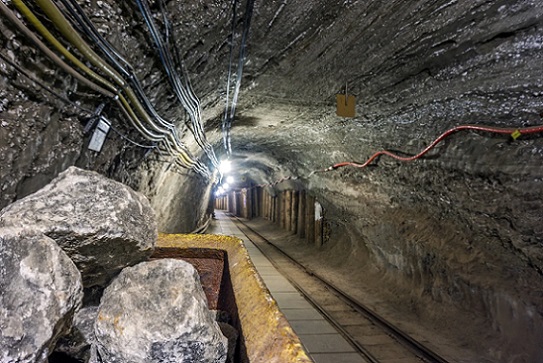
Conclusion: Mining as the Linchpin of Modern Civilization
Mining is not a relic of the industrial past, it is a dynamic, evolving industry at the heart of 21st-century progress. Its outputs enable everything from life-saving medical devices to climate-resilient infrastructure, from digital connectivity to national defense. As the world pursues decarbonization, digital transformation, and sustainable development, demand for responsibly sourced minerals will only grow.
Recognizing mining’s interconnectedness reveals a profound truth: you cannot build a green, digital, or secure future without the foundational materials that mining provides. The challenge, and opportunity, lies in ensuring this essential industry operates with environmental stewardship, social responsibility, and technological innovation at its core.
In this light, mining transcends its extractive origins to become a catalyst for global advancement, a silent partner in every sector that shapes our modern world.
Tweet

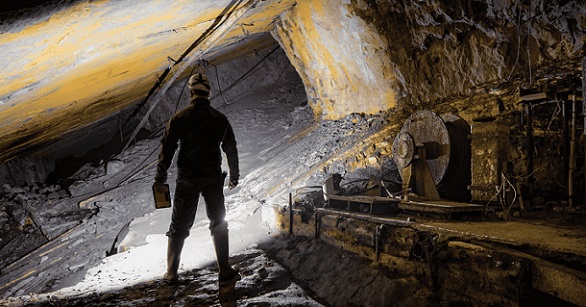





New! Comments
Have your say about what you just read! Leave a comment in the box below.